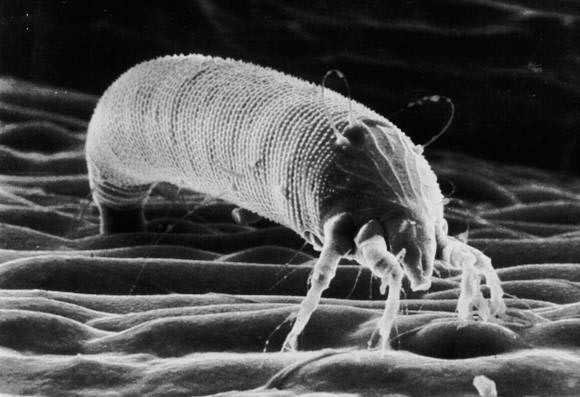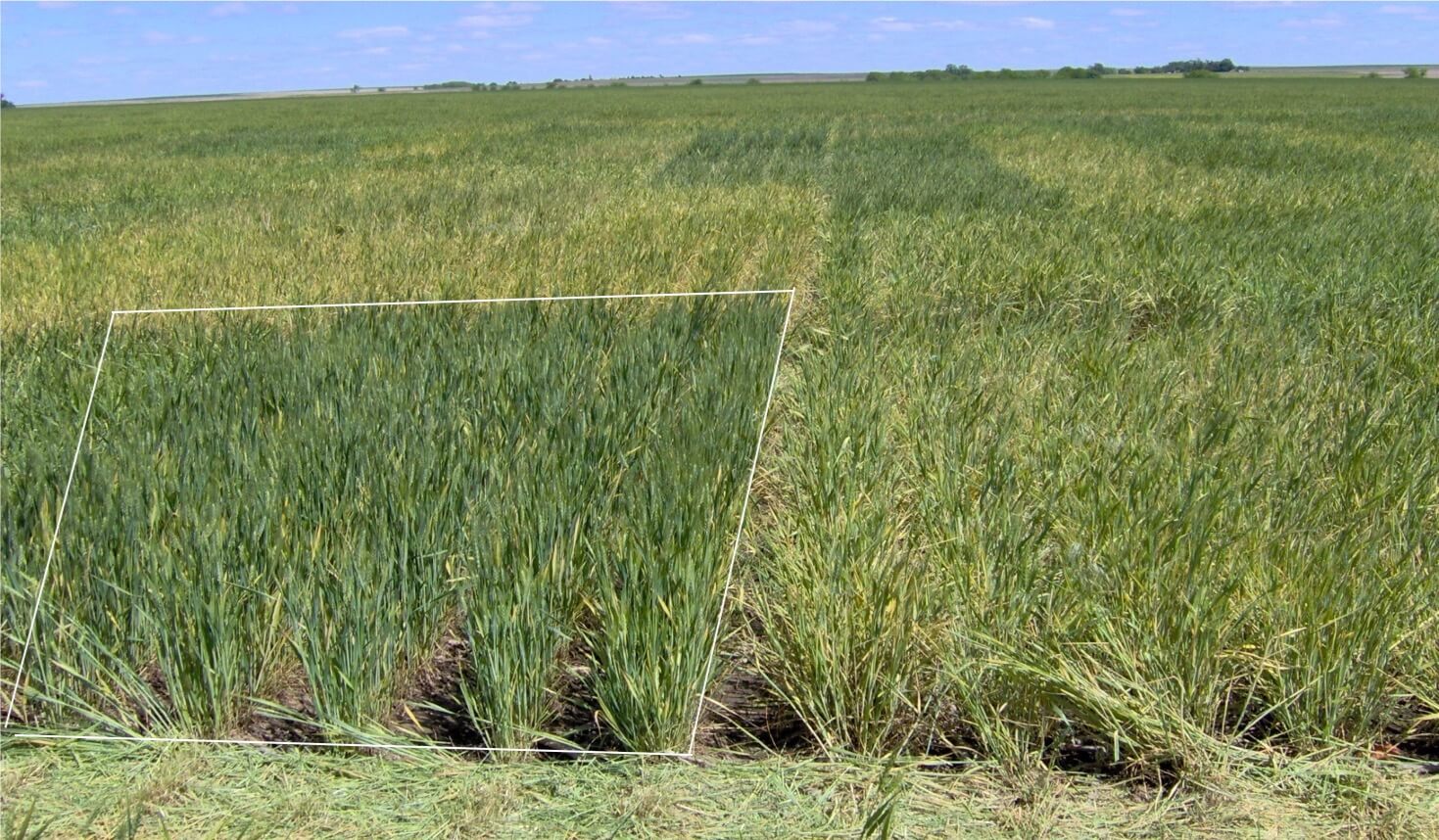Adult and immature wheat curl mites are tiny, white, cigar-shaped organisms with four legs near the head. They are nearly invisible to the naked eye and fit between the veins of the wheat leaves. Eggs are placed in rows along leaf veins. The mites reproduce most rapidly at 75° to 85°F. Reproduction stops at temperatures near freezing, but the mites can survive for several months at near freezing temperatures and for several days at 0 °F. Under good conditions, a generation can be completed in 10 days, and populations seem favored by hot, dry weather. Most mites are found on the terminal leaves and move to each new leaf as it emerges. Feeding by WCM induces the production of reactive oxygen species in the wheat plant, which have inhibiting effects on photosynthesis and root growth. Heavy mite populations can cause the leaf margins to role or curl inward, hence the name.
As the wheat plant dries down, the wheat curl mites congregate on flag leaves and on the glumes of heads where they are picked up by wind currents and carried to their over-summering hosts – corn and a few other grass species, volunteer wheat being the most important. Although mites will survive only a few hours off the plant in warm weather, they can be carried passively on the wind for up to 10 miles. This makes control of volunteer wheat an area-wide responsibility for wheat farmers. Fortunately, the most common wild grasses in Kansas are not good hosts for WCM, and those that are, such as barnyard grass and green foxtail, are not common.
As summer hosts dry down the dispersal process occurs in reverse, and mites are carried by winds to newly emerged winter wheat. Hail during heading can knock wheat kernels and curl mites to the ground, leading to the early germination of volunteer plants that can be immediately infested with the mites. The resulting large summer populations will increase the risk of infestation for seedling wheat in the fall.


